##鴻蒙開發(fā)能力 ##HarmonyOS SDK應(yīng)用服務(wù)##鴻蒙金融類應(yīng)用 (金融理財#
一、前言
鴻蒙星閃NearLink Kit 是 HarmonyOS 提供的短距離通信服務(wù),支持星閃設(shè)備間的連接、數(shù)據(jù)交互。例如,手機可作為中心設(shè)備與外圍設(shè)備(如鼠標(biāo)、手寫筆、智能家電、車鑰匙等)通過星閃進行連接。
二、NearLink Kit 的接入與使用:
鴻蒙星閃(NearLink)的基本接入代碼示例,包含設(shè)備發(fā)現(xiàn)、連接和數(shù)據(jù)傳輸?shù)暮诵牧鞒蹋?/p>
// NearLink設(shè)備管理服務(wù)示例
import nearlink from '@ohos.nearlink';
import nearlinkSle from '@ohos.nearlink.sle';
import common from '@ohos.app.ability.common';
// 星閃服務(wù)管理類
export class NearLinkManager {
private context: common.UIAbilityContext | undefined;
private deviceManager: nearlinkSle.SleDeviceManager | undefined;
private connectedDeviceId: string | null = null;
private dataChannel: nearlinkSle.SleDataChannel | undefined;
constructor(context: common.UIAbilityContext) {
this.context = context;
}
// 初始化星閃服務(wù)
async initNearLinkService() {
try {
// 檢查并請求星閃權(quán)限
await this.checkAndRequestNearLinkPermission();
// 創(chuàng)建設(shè)備管理器實例
this.deviceManager = await nearlinkSle.getSleDeviceManager(this.context!);
// 注冊設(shè)備狀態(tài)變化監(jiān)聽
this.registerDeviceStateListener();
console.info('NearLink service initialized successfully');
} catch (error) {
console.error(`Failed to initialize NearLink service: ${error}`);
throw error;
}
}
// 檢查并請求星閃權(quán)限
private async checkAndRequestNearLinkPermission() {
// 權(quán)限檢查邏輯
// ...
}
// 開始掃描附近的星閃設(shè)備
async startDiscovery() {
if (!this.deviceManager) {
throw new Error('Device manager not initialized');
}
try {
// 配置掃描參數(shù)
const discoveryConfig = {
mode: nearlinkSle.SleDiscoveryMode.ACTIVE,
duration: 30, // 掃描持續(xù)時間(秒)
filter: {
deviceTypes: [nearlinkSle.SleDeviceType.ALL]
}
};
// 注冊設(shè)備發(fā)現(xiàn)回調(diào)
const callback = {
onDeviceFound: (device: nearlinkSle.SleDevice) = > {
console.info(`Found device: ${device.deviceName}, type: ${device.deviceType}`);
// 處理發(fā)現(xiàn)的設(shè)備,例如更新UI
this.onDeviceDiscovered(device);
},
onDiscoveryStateChanged: (state: number) = > {
console.info(`Discovery state changed: ${state}`);
}
};
// 開始掃描
await this.deviceManager.startDiscovery(discoveryConfig, callback);
console.info('NearLink device discovery started');
} catch (error) {
console.error(`Failed to start discovery: ${error}`);
throw error;
}
}
// 處理發(fā)現(xiàn)的設(shè)備
private onDeviceDiscovered(device: nearlinkSle.SleDevice) {
// 這里可以添加設(shè)備過濾邏輯
// ...
// 通知UI更新設(shè)備列表
// ...
}
// 連接到指定星閃設(shè)備
async connectToDevice(deviceId: string) {
if (!this.deviceManager) {
throw new Error('Device manager not initialized');
}
try {
// 創(chuàng)建連接參數(shù)
const connectParams = {
timeout: 10000, // 連接超時時間(毫秒)
connectionType: nearlinkSle.SleConnectionType.DATA_CHANNEL
};
// 連接設(shè)備
const connectionResult = await this.deviceManager.connect(deviceId, connectParams);
if (connectionResult.resultCode === 0) {
this.connectedDeviceId = deviceId;
this.dataChannel = connectionResult.dataChannel;
console.info(`Connected to device: ${deviceId}`);
// 注冊數(shù)據(jù)接收回調(diào)
this.registerDataReceiveListener();
} else {
console.error(`Failed to connect device, error code: ${connectionResult.resultCode}`);
throw new Error(`Connection failed: ${connectionResult.resultCode}`);
}
} catch (error) {
console.error(`Failed to connect device: ${error}`);
throw error;
}
}
// 注冊數(shù)據(jù)接收監(jiān)聽器
private registerDataReceiveListener() {
if (!this.dataChannel) return;
this.dataChannel.on('dataReceived', (data: ArrayBuffer) = > {
// 處理接收到的數(shù)據(jù)
const decoder = new TextDecoder();
const message = decoder.decode(data);
console.info(`Received data: ${message}`);
// 通知UI有新數(shù)據(jù)到達
// ...
});
}
// 發(fā)送數(shù)據(jù)到已連接設(shè)備
async sendData(message: string) {
if (!this.dataChannel) {
throw new Error('Data channel not initialized');
}
try {
const encoder = new TextEncoder();
const data = encoder.encode(message).buffer;
// 發(fā)送數(shù)據(jù)
await this.dataChannel.send(data);
console.info(`Data sent successfully: ${message}`);
} catch (error) {
console.error(`Failed to send data: ${error}`);
throw error;
}
}
// 斷開與設(shè)備的連接
async disconnect() {
if (!this.deviceManager || !this.connectedDeviceId) return;
try {
await this.deviceManager.disconnect(this.connectedDeviceId);
this.connectedDeviceId = null;
this.dataChannel = undefined;
console.info('Device disconnected');
} catch (error) {
console.error(`Failed to disconnect device: ${error}`);
throw error;
}
}
// 注冊設(shè)備狀態(tài)變化監(jiān)聽
private registerDeviceStateListener() {
if (!this.deviceManager) return;
this.deviceManager.on('deviceStateChanged', (params) = > {
console.info(`Device state changed: ${JSON.stringify(params)}`);
// 處理設(shè)備狀態(tài)變化
// ...
});
}
// 釋放資源
async release() {
await this.disconnect();
if (this.deviceManager) {
try {
await this.deviceManager.release();
console.info('NearLink resources released');
} catch (error) {
console.error(`Failed to release resources: ${error}`);
}
}
}
}
三、鴻蒙星閃指標(biāo)對比
以下是鴻蒙星閃、藍牙和NFC在技術(shù)性能、應(yīng)用場景、成本與生態(tài)系統(tǒng)等方面的區(qū)別表格:
| 比較項目 | 鴻蒙星閃 | 藍牙 | NFC |
|---|---|---|---|
| 傳輸速率 | 最高可達2.5Gbps,低功耗模式下峰值速率可達12Mbps | 藍牙5.2的傳輸速率為400Mbps,異步連接允許一個方向的數(shù)據(jù)傳輸速率達到721kbps,反向速率57.6kbps | 無(數(shù)據(jù)傳輸速率通常遠低于前兩者) |
| 延遲表現(xiàn) | 傳輸延遲可低至20微秒,響應(yīng)時延為0.25ms | 時延約為600微秒,響應(yīng)時延約為10ms | 無(主要用于近距離快速交互,不強調(diào)延遲指標(biāo)) |
| 連接設(shè)備數(shù)量 | 支持最多4096臺設(shè)備同時連接 | 一般只能連接8臺設(shè)備,1個藍牙設(shè)備可以同時加入8個不同的微網(wǎng) | 無(一般用于一對一的快速連接,不強調(diào)多設(shè)備連接) |
| 抗干擾能力 | 采用多種抗干擾技術(shù),抗干擾能力比藍牙提升10dB以上 | 采用跳頻展頻技術(shù),抗干擾性強,不易竊聽 | 無(工作距離短,干擾相對較小) |
| 功耗表現(xiàn) | 采用先進的功耗管理策略,功耗僅相當(dāng)于藍牙的60% | 功耗較低,適用于多種低功耗設(shè)備 | 功耗較低(工作時間短) |
| 消費電子領(lǐng)域應(yīng)用 | 實現(xiàn)高清無損音頻傳輸和低延遲的交互體驗,如華為MatePad Pro 13.2英寸平板電腦和FreeBuds Pro 3無線耳機等產(chǎn)品 | 廣泛用于無線耳機、音箱等設(shè)備的音頻傳輸 | 可用于設(shè)備之間的快速配對和數(shù)據(jù)傳輸,如手機與音箱、耳機等設(shè)備快速連接 |
| 智能家居領(lǐng)域應(yīng)用 | 能實現(xiàn)多種智能設(shè)備的無縫連接,支持更多設(shè)備同時在線 | 用于連接智能家電,實現(xiàn)遠程控制等功能 | 可通過NFC標(biāo)簽快速切換手機模式或控制智能家電開關(guān)、模式等 |
| 智能汽車領(lǐng)域應(yīng)用 | 可實現(xiàn)車內(nèi)外設(shè)備的高速、低延遲數(shù)據(jù)交換,提升自動駕駛的安全性和效率 | 用于連接車載設(shè)備,如車載藍牙電話、藍牙音樂播放等 | 可用于汽車鑰匙功能,通過手機NFC實現(xiàn)車輛解鎖、啟動等 |
| 工業(yè)制造領(lǐng)域應(yīng)用 | 能滿足高精度控制和大數(shù)據(jù)傳輸?shù)男枨螅苿庸I(yè)4.0的實現(xiàn) | 用于工業(yè)設(shè)備之間的無線連接,如傳感器數(shù)據(jù)傳輸?shù)?/td> | 無(一般不用于工業(yè)制造場景) |
| 成本 | 相關(guān)解決方案、芯片模塊等成本還比較高 | 技術(shù)成熟,成本較低 | 成本相對較低 |
| 生態(tài)系統(tǒng) | 生態(tài)系統(tǒng)還不夠完善,支持星閃技術(shù)的設(shè)備相對較少 | 擁有龐大而成熟的生態(tài)系統(tǒng),幾乎所有電子設(shè)備都支持藍牙 | 在移動支付、交通出行等領(lǐng)域有廣泛的應(yīng)用,生態(tài)系統(tǒng)較為成熟 |
| 連接方式與距離 | 覆蓋范圍約為藍牙的兩倍,常規(guī)覆蓋距離可達到20米,設(shè)備之間的連接需要在一定范圍內(nèi)進行配對和連接 | 一般有效傳輸距離為10cm - 10m,增加發(fā)射功率可達到100米,需要進行配對和連接操作 | 工作距離非常短,一般在幾厘米以內(nèi),通常用于設(shè)備之間的近距離快速觸碰連接 |
審核編輯 黃宇
-
鴻蒙
+關(guān)注
關(guān)注
60文章
2613瀏覽量
44010 -
HarmonyOS
+關(guān)注
關(guān)注
80文章
2121瀏覽量
32908 -
星閃
+關(guān)注
關(guān)注
8文章
181瀏覽量
974
發(fā)布評論請先 登錄
【BearPi-Pico H3863星閃開發(fā)板體驗連載】星閃超低功耗SLE透傳功能測試
華為HarmonyOS 4搭上的星閃技術(shù)
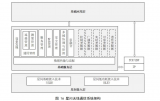
華為星閃技術(shù)原理 星閃技術(shù)怎么使用
星閃技術(shù)專利是華為的嗎 星閃技術(shù)適用哪些手機
星閃技術(shù)芯片怎么樣 如何支持星閃技術(shù)
誠邁科技獲“鴻星閃耀先鋒伙伴”授牌,引領(lǐng)“鴻蒙+星閃”融合創(chuàng)新
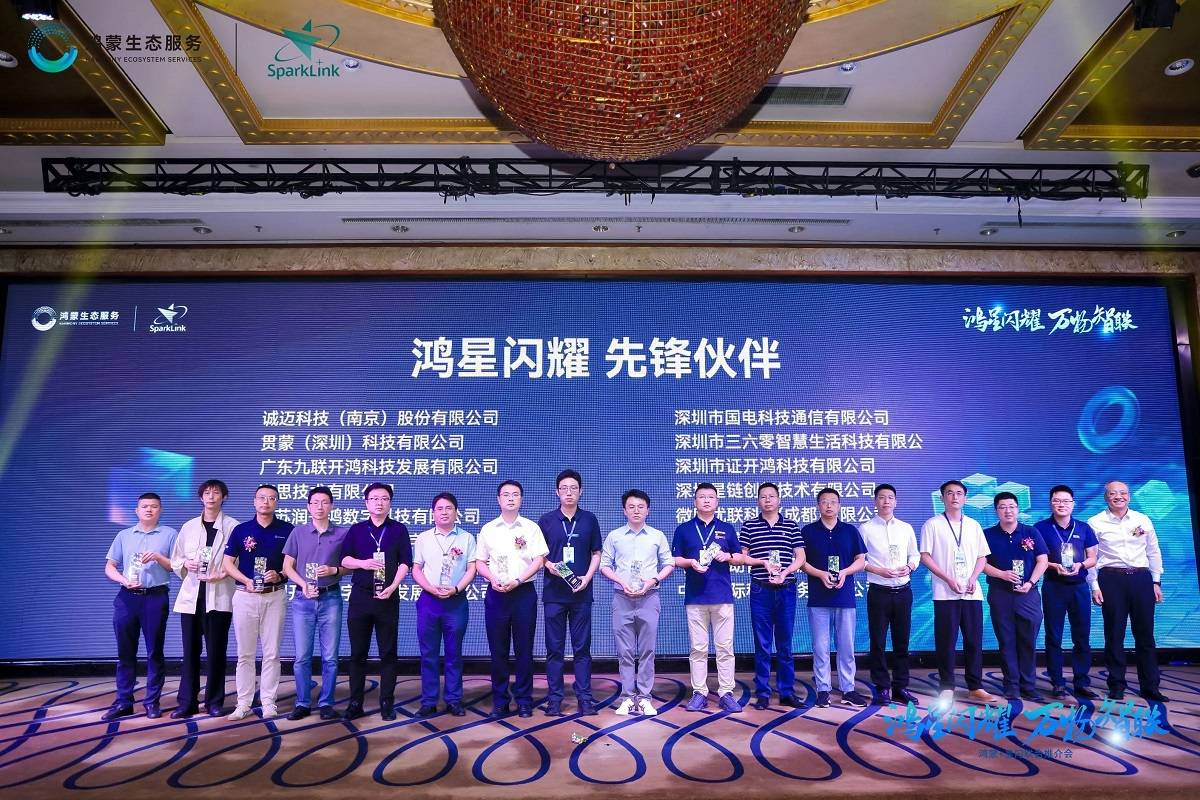
HarmonyOS 5 makeObserved接口詳解
【HarmonyOS 5】鴻蒙應(yīng)用隱私保護詳解
【HarmonyOS 5】金融應(yīng)用開發(fā)鴻蒙組件實踐
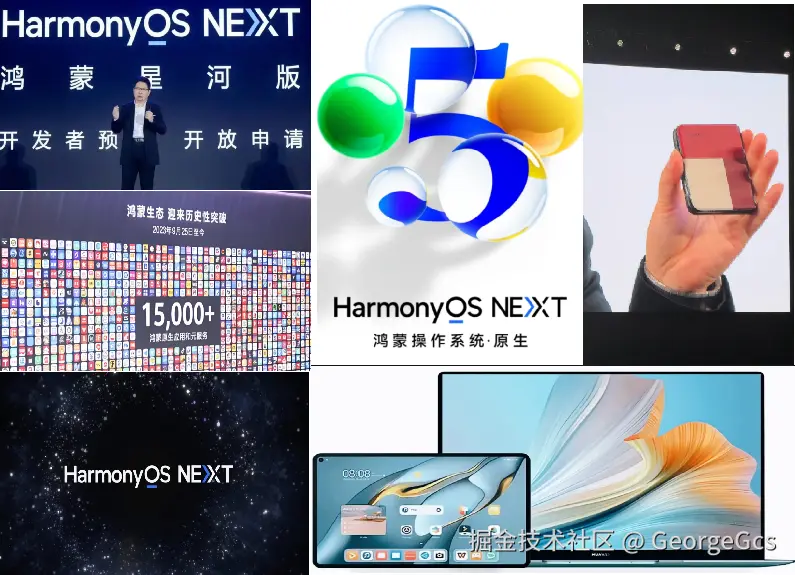
【HarmonyOS 5】鴻蒙中的UIAbility詳解(三)
HDC 2025:鴻蒙星閃,軟硬結(jié)合,絕佳“CP”






 【HarmonyOS 5】鴻蒙星閃NearLink詳解
【HarmonyOS 5】鴻蒙星閃NearLink詳解

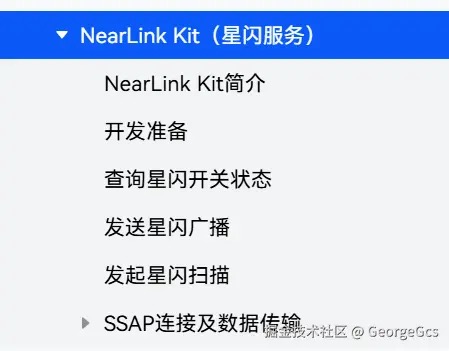
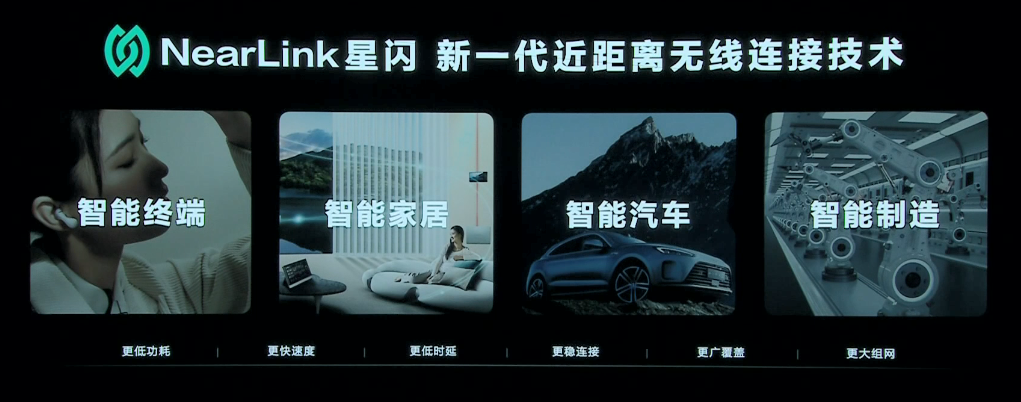
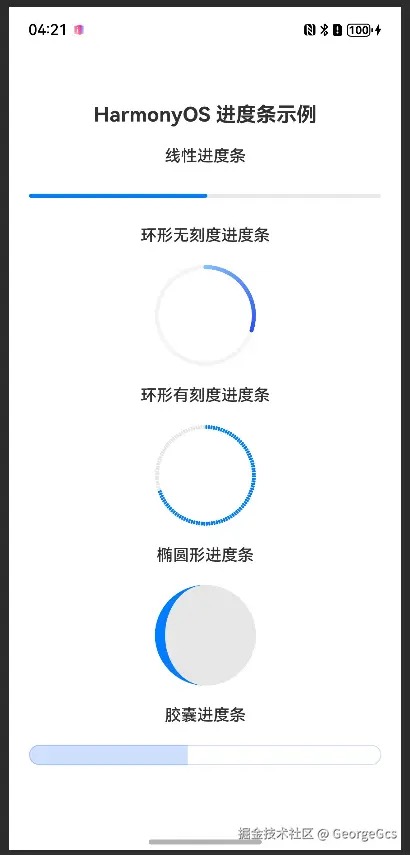
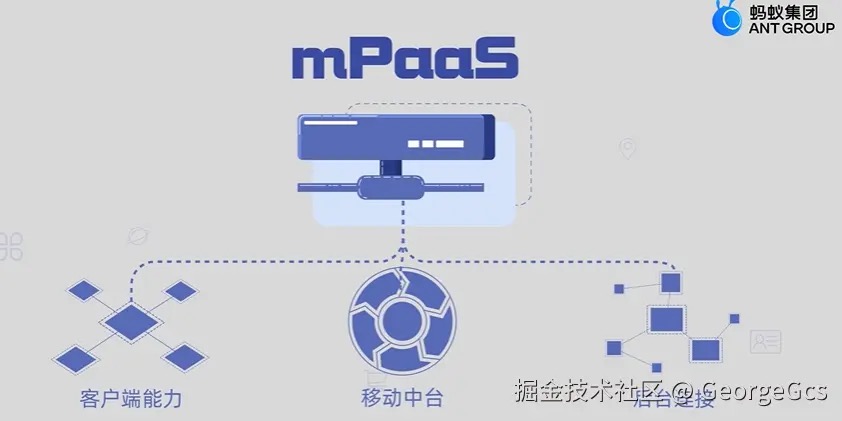











評論